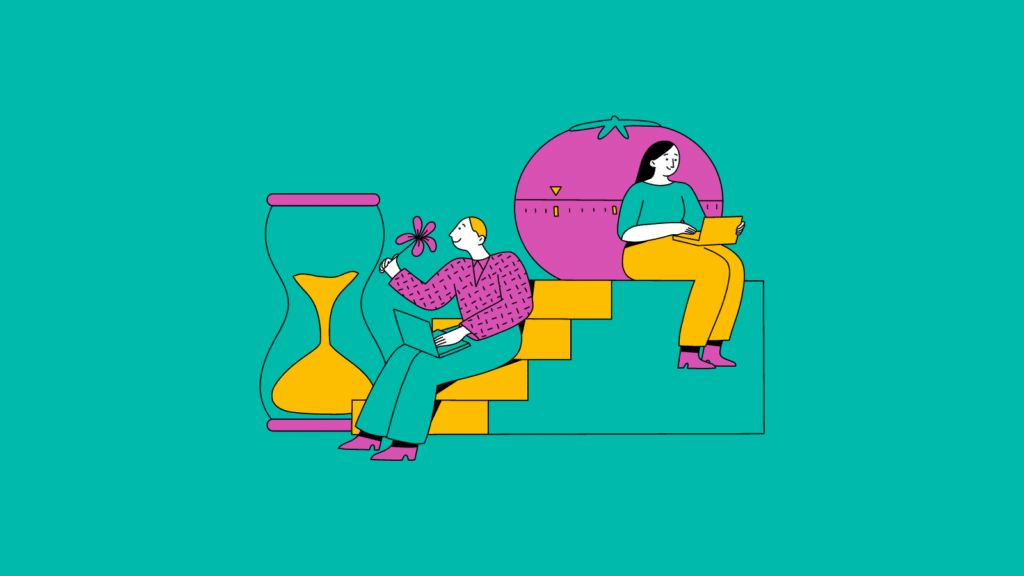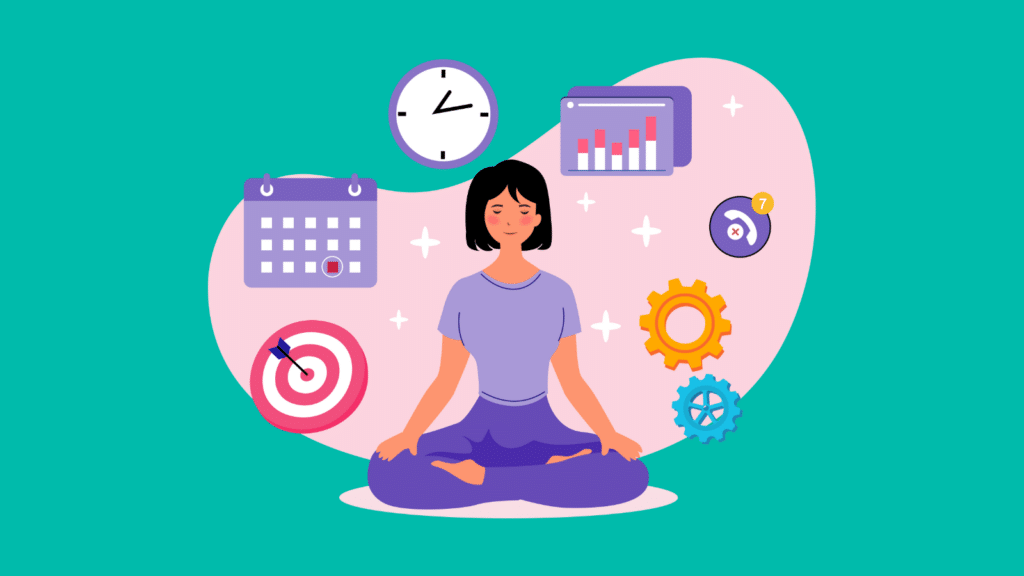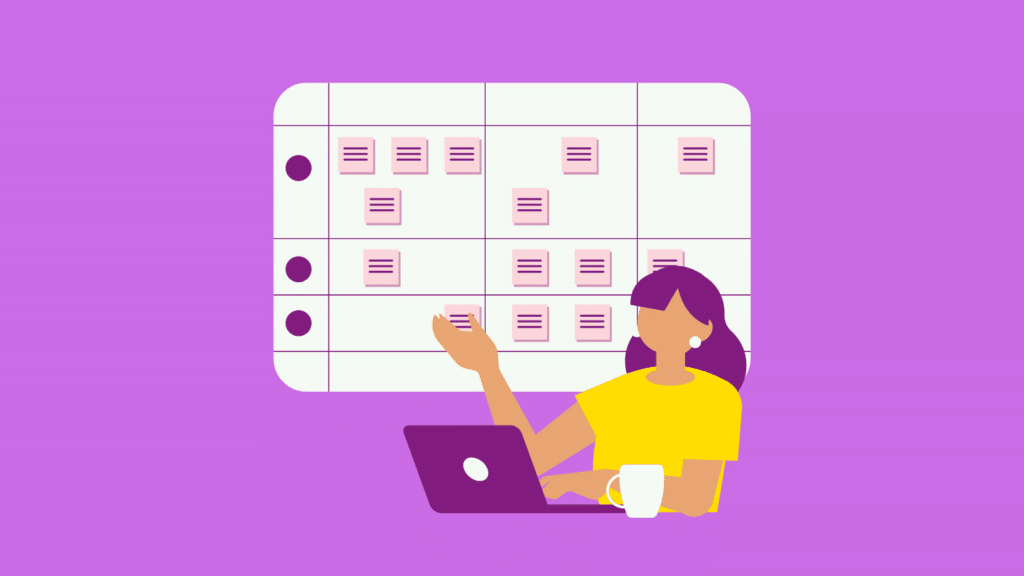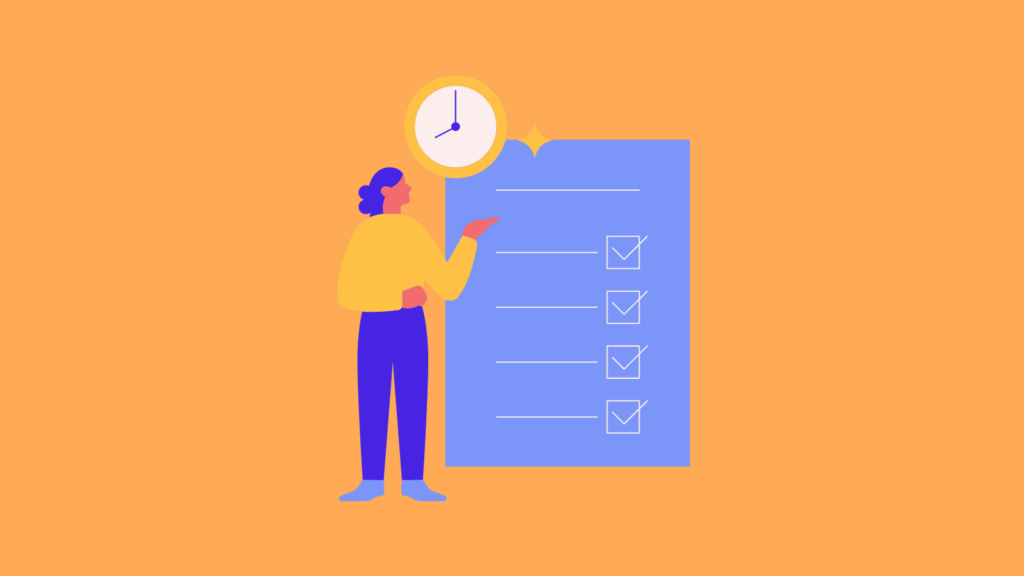Productivity Explained: 101 Guide for Individuals and Teams
Have you ever marveled at how some businesses flourish with fewer resources or how some individuals achieve more within tight schedules? That’s the essence of productivity, whether in boardrooms or personal routines. It’s about making the most of what’s available, both in business ventures anpd daily tasks.
In this article, we’ll dissect productivity from both a corporate and personal lens, highlighting the key metrics and strategies. Ready to elevate your output, whether it’s on the work front or in personal endeavors?

Looking for the most effortless productivity tracker?
“I’ve doubled my revenue thanks to Timeular and managed to halve how much I work.” – Valdemar Alfred, Owner of Valdefar
What is productivity?
Productivity is the efficiency of converting resources into outputs or results. In both personal and business contexts, it represents the relationship between the input invested—like time, energy, or money—and the value or outcome produced.
Within a business setting, team productivity becomes especially crucial. It not only reflects how well a collective group collaborates and utilizes their combined skills but directly impacts revenue generation.
A highly productive team can streamline processes, reduce costs, and accelerate deliverables, all of which contribute to enhanced revenue. In essence, fostering team productivity is not just about getting tasks done; it’s about ensuring sustained profitability and growth for the organization.
What are the benefits of being productive?
There is a variety of reasons why individuals and businesses are striving for better productivity. The main benefit of productivity is, of course, money. Let’s take a closer look at the financial advantages of enhanced productivity – both for businesses and individuals.
Financial benefits of enhanced productivity
Increased revenue
In the corporate world, improved productivity often correlates with higher business efficiency, reduced operational costs, and optimized resource allocation. This means businesses can produce the same amount, if not more, while incurring fewer expenses, leading to higher profit margins.
Additionally, a productive company can respond faster to market changes, capitalizing on new opportunities and thereby increasing revenue.
Read:
- How to increase the profitability of your business
- Guide to boosting marketing agency profit margins
Individual savings
On a personal level, being productive can have direct financial implications. For example, completing tasks efficiently can lead to savings on late fees, missed opportunities, or unnecessary expenses that might occur due to last-minute rushes.
Productive individuals can also harness their skills for side hustles or freelance opportunities, translating their efficiency into additional income streams.
Career growth
Both in freelance and salaried roles, consistently showcasing high productivity can make an individual stand out. This recognition can lead to promotions, raises, or high-value project assignments, all of which can significantly boost one’s income.
Optimized time value
Time is money. Whether you’re a business owner assessing the hourly rates of employees or an individual determining the worth of your hour, productivity ensures that each hour’s value is maximized.
This can mean completing more client projects within a billing cycle or having spare time as an individual to invest in financial literacy or planning.
Other benefits of high productivity
Optimal resource use
Being productive ensures that every minute and every resource counts, leading to less waste and more output. In short, high productivity means high efficiency.
Peace of mind and reduced stress
With tasks neatly wrapped up and deadlines met, the mental weight lifts, offering a clearer mind and reduced worries. Additionally, efficiently ticking off tasks means a better work-life balance, and more free moments, granting individuals the luxury to indulge in hobbies or downtime.
Greater satisfaction
Completing tasks productively brings a sense of achievement and fulfillment, enhancing overall well-being.
Strategic clarity
A productivity-driven perspective enhances focus, helping to sift through noise and prioritize tasks effectively.
Common challenges and reasons why you are unproductive
Achieving high productivity levels is a goal for many, but several challenges can act as barriers. Below you will find some common challenges.
Poor time management
Without effective time management techniques, individuals can find themselves overwhelmed, not knowing where to start, paralyzing productivity.
Full guide: What is time management?

Looking for the most effortless time management app?
“We’ve saved an impressive lot of time with Timeular.” – Simon Echle, Managing Director of avocado
Insufficient knowledge of productivity strategies
If you or your team lack adequate understanding of effective productivity techniques, it becomes difficult to identify and remove inefficiencies, constraining your potential to reach peak efficiency levels.
Helpful resources:
Procrastination
Putting off tasks, particularly those seen as challenging or monotonous, can impede productivity. Breaking the initial resistance to begin is frequently a significant barrier.
Multitasking
While it may seem like juggling multiple tasks can boost productivity, research suggests that multitasking often results in decreased focus and efficiency for each task.
Poor prioritization
Lack of prioritization can lead to wasted time on non-essential tasks, causing crucial activities to be overlooked or delayed, thereby diminishing overall productivity.
Lack of clear goals
Without well-defined work goals or a clear roadmap, it’s hard to prioritize tasks or stay motivated, leading to decreased productivity.
Read:
- Why it’s important to set realistic goals
- What is the difference between long-term and short-term goals
Distractions
In today’s digital age, distractions are omnipresent. Regular interruptions, whether from colleagues, emails, or phone calls, can break one’s flow, making it hard to maintain a consistent productivity level.
Read: How to improve focus and concentration
Inefficient processes
Redundant or outdated processes in a workplace can significantly slow down output, leading to wasted time and resources.
Inadequate tools & resources
Not having access to the right tools, software, or resources can slow down processes and make tasks more labor-intensive.
How to measure a team’s productivity?
If you are wondering how to track employee performance, look no further. Start measuring your and your team’s effectiveness by implementing a productivity time tracker that will capture where their time goes.
A productivity tracker is like your team’s performance dashboard. You can track employee hours and identify unproductive meetings. By diving into task completion times, you can spot where things might be slowing down or which tasks take up more time than they should.
It will not only help you identify the stand-out performers and areas that might need a little boost but also gain insights into how to make an effective schedule for employees. The app also offers a clear view of everyone’s contributions, ensuring transparency and accountability.
How to do it?
Set time budgets for each project or task. Then, when a sufficient portion of data is collected, run a time audit to review what are the most time-consuming tasks and what is the time efficiency of your activities.
Check how much of your time is billable (See billable hours) to translate data into revenue directly.

Start tracking time with 100% effort-free time tracking app
“I love how robust Timeular is. It’s increased our ability to see what’s going on in the business and helped us understand what changes are needed to maintain profitability.” – Kaitlin Snow Seamons
Read more:
- How to measure developer productivity
- Top performance review tips
- How to build a high-performing team
Best strategies to boost productivity
Boosting productivity isn’t a one-size-fits-all game. But, with the right techniques at your fingertips, you can experiment and find what suits you and your team best. We have divided our productivity tips into six categories to equip you with various answers to the question of How to increase productivity.
Dive into curated strategies below, and for a deeper dive, check out our dedicated articles:
Time management techniques
Mastering time management techniques helps boost productivity by focusing on the right tasks at the right times. It reduces wasted time and distractions, allowing for more focused work. Plus, balancing work and breaks keeps energy levels up and prevents burnout. In short, good time management makes work smarter, not harder.
1. Time tracking
With time tracking, you better understand how you spend your time, allowing you to pinpoint inefficiencies, prioritize better, and tackle tasks with heightened focus.
To start tracking time for productivity, choose an effortless time tracker, which works as a productivity tracker. Consistently log your tasks and hours, then analyze the data to identify time sinks, adjust your priorities, and optimize your workflow for efficiency.
2. Timeboxing
Timeboxing is a technique where you allocate specific, fixed amounts of time to individual tasks or activities. To implement it for productivity, you decide on the duration for each task – like 30 minutes for reading emails or an hour for a project meeting – and commit to only focusing on that task for the set time frame.
3. Pomodoro technique
The Pomodoro technique boosts your productivity by breaking down work into 25-minute focused intervals, separated by 5-minute breaks, helping you maintain energy and focus. To use it, you just set a Pomodoro timer for 25 minutes, work intensely on a task, and then relax for 5 minutes before diving back in, keeping your productivity fresh and compelling.
Recommended:
4. Time blocking
Time blocking enhances productivity by allocating specific blocks of time to dedicated tasks, eliminating the indecision of what to work on next. To utilize this method, you simply segment your day into blocks and assign each block to a specific task or activity, ensuring focused effort and efficient use of time.
- Useful resources:
5-minute rule by Elon Musk
Daily and weekly time blocking templates
5. Deep work
There is no productivity without deep work, which is when you focus on a single task at a time. There are no calls, notifications, or side-tasks – if so, just music in the background to help you focus.
Scheduling deep work sessions every morning should be your first step towards improving your productivity.
Why? There are multiple reasons! It boosts productivity, helps you finish your tasks faster, and allows your brain to use all its energy to provide the best quality.
Prioritization and goal-setting
Setting clear goals tells you what to aim for. By choosing which tasks are most important and doing them first, you get more done in less time.
1. Set realistic goals
Setting realistic goals ensures you don’t get overwhelmed or discouraged by unachievable targets.
To implement this, break down larger tasks into smaller, manageable steps and prioritize them based on importance and feasibility.
Read:
2. ABCDE prioritization method
The ABCDE method improves productivity by categorizing tasks based on their importance and urgency.
To use it, label tasks as “A” for critical, “B” for important but not urgent, “C” for nice to do, “D” for delegate, and “E” for eliminate; then, tackle tasks in the order of their assigned letters.
3. MoScOw prioritization method
The MoSCoW prioritization method helps teams categorize tasks into four clear categories: Must have, Should have, Could have, and Won’t have at this time.
To implement it, evaluate each task or feature based on its significance and urgency, then assign it to one of these categories, ensuring that ‘Must have’ items are addressed first to deliver maximum value.
4. RICE method
The RICE method boosts productivity by ranking tasks using Reach, Impact, Confidence, and Effort, offering an organized way to set priorities.
To apply it, assign values to each task using these four parameters, then compute the overall RICE score (Reach times Impact times Confidence, divided by Effort) to decide the sequence of tasks for optimal outcomes.
5. Time management matrix
The Time management matrix categorizes tasks into four quadrants based on urgency and importance, helping you focus on what truly matters and plan better.
To implement it, divide your tasks into these quadrants: urgent and important, not urgent but important, urgent but not important, and neither urgent nor important, then prioritize them accordingly to enhance efficiency and achieve your goals.
6. Warren Buffet’s 5/25 rule
Warren Buffet’s 5/25 rule enhances productivity by ensuring you focus intently on your most important goals, preventing spread-too-thin syndrome.
To apply it, list down your top 25 career goals, then circle the five most crucial ones; dedicate most of your time and energy to those five, while avoiding the other 20 until your primary objectives are achieved.
7. RPM
RPM boosts productivity by providing a clear roadmap of purpose-driven actions, ensuring you’re always working towards meaningful outcomes.
To use it, first define exactly what you want (Results), understand your motivation (Purpose), and then list out specific steps to achieve that result (Massive Action Plan).
8. The Pickle Jar Theory
The Pickle Jar Theory categorizes tasks into rocks (high-priority), pebbles (urgent but less important), sand (distractions), and water (personal life). It advises starting with high-priority tasks, then handling urgent but less important ones, followed by dealing with distractions, and finally, making time for personal life.
This approach helps prioritize, control time, boost productivity, and maintain work-life balance.
9. Eat the frog technique
Tackling the most challenging task first can set a positive tone for the day. It not only boosts motivation but also creates momentum where subsequent tasks seem more manageable in comparison. It’s the so-called “eat the frog” technique.
Read: Top apps for work prioritization
Work-life balance and stress management
Importance of physical and mental well-being
Physical and mental well-being is crucial for productivity because a healthy body and mind ensure sustained energy, focus, and resilience against stress.
To bolster productivity, prioritize regular exercise, adopt a balanced diet, get sufficient sleep, and engage in mindfulness practices like meditation or deep breathing exercises.
Work-life balance
Maintaining a work-life balance is vital for productivity because it ensures sustained energy, prevents burnout, and fosters creativity. To optimize productivity, establish clear boundaries for work hours, prioritize personal time, and engage in activities outside of work that rejuvenate the mind and body.
Take a break
Ever notice how a good break or holiday can feel like hitting a refresh button? By stepping back and recharging, you become more focused and ready to tackle tasks with renewed energy.
Create a routine
Setting up a routine is like giving your day a roadmap. Knowing what’s next minimizes decision fatigue and simplifies your tasks, making your day more productive.
Stress management
Stress management is crucial for productivity as it preserves mental clarity and increases concentration, enhancing overall work performance.
To improve productivity, it’s essential to identify stress triggers, develop healthy coping mechanisms—like meditation, regular exercise, or engaging in hobbies—and ensure adequate rest periods.
Read:
Automation and delegation
1. Leverage technology and tools
Leveraging technology and tools can significantly boost your productivity. They simplify tasks, automate processes, and enhance communication.
To harness their potential, identify areas where you can improve efficiency, select the appropriate tools, and ensure you’re proficient in their use, ultimately making your work more streamlined and productive.
2. Outsource non-essential tasks
Outsourcing non-essential tasks is vital for productivity because it frees up your time and resources to focus on core activities that drive your goals forward.
To implement it effectively, identify tasks that can be delegated, find reliable partners or freelancers, and establish clear communication and workflow processes to ensure a smooth transition of responsibilities.
3. Effective delegation strategies
Effective delegation strategies distribute workload efficiently, empower team members, and free up time for critical tasks.
To delegate efficiently, define clear roles and responsibilities, communicate expectations, and ensure you have a system to monitor progress, allowing you to delegate tasks confidently and boost overall productivity.
Learn how to delegate tasks efficiently.
Read:
- Workload analysis step by step
- Workload management guide
- How to deal with employees who complain about the workload
- Capacity planning: Everything you need to know
- Automation in the workplace: What is and its benefits
Recommended productivity tools
Task and project management tools
Note-taking and organization tools
Read:
Collaboration and Communication Tools
Productivity Apps for Mobile and Desktop
- Best productivity apps for Android
- Top productivity apps for Windows
- Best iPad productivity apps
- Greatest productivity apps for Mac
- Excellent AI tools
- Top-rated productivity apps
Conclusion
Productivity is the cornerstone of success, whether on an individual or team level. This article has illuminated the significance of productivity, from its financial advantages to its impact on overall well-being.
By addressing common challenges and offering diverse strategies and tools, we’ve provided a roadmap for readers to enhance their efficiency and effectiveness in various aspects of life.
The key now is to take action and implement these insights, as doing so will not only lead to financial gains but also create a sense of accomplishment, reduce stress, and improve work-life balance. Productivity is the key to unlocking one’s full potential, and it’s within everyone’s reach.
FAQ
Productivity and efficiency are related but distinct concepts; productivity is about quantity and output, while efficiency focuses on the quality of resource utilization.
Read more in the article Productivity vs efficiency.
Efficiency involves accomplishing tasks with minimal effort, time, or resources, focusing on process optimization, while efficacy is about achieving desired results with an emphasis on quality and impact, emphasizing the outcome.
Read more in the article: Efficiency vs efficacy.
Music can increase productivity by positively impacting concentration, motivation, mood, and receptiveness to information, particularly when listening to instrumental or classical music, but the effectiveness may vary based on individual preferences and tasks.
Read more in the article: Does music increase productivity?
Stress can negatively influence work productivity by impairing concentration, memory, decision-making abilities, and cognitive functions, as well as leading to absenteeism, presenteeism, negative behavior, and conflicts with colleagues, ultimately reducing the quality and quantity of work output.
Read more in the article: How stress affects productivity
Teamwork improves productivity by facilitating workload sharing, reducing stress, promoting collaboration, encouraging learning, fostering alignment around common goals, and creating a positive work environment that enhances employees’ well-being and creativity.
Read more in the article: How teamwork affects productivity
Remote working generally increases productivity by reducing distractions, eliminating commute time, lowering stress levels, allowing for better work-life balance, and providing more control over one’s work environment, as evidenced by various studies and surveys.
Read more in the article: How remote work affects productivity
Quick decision-making is important because it saves time and money, increases employee competitiveness, and helps businesses stay ahead of the competition. Additionally, it allows entrepreneurs to respond rapidly to customer needs, ultimately contributing to business success and personal happiness.
Read more in the article: Why is quick decision making important?






